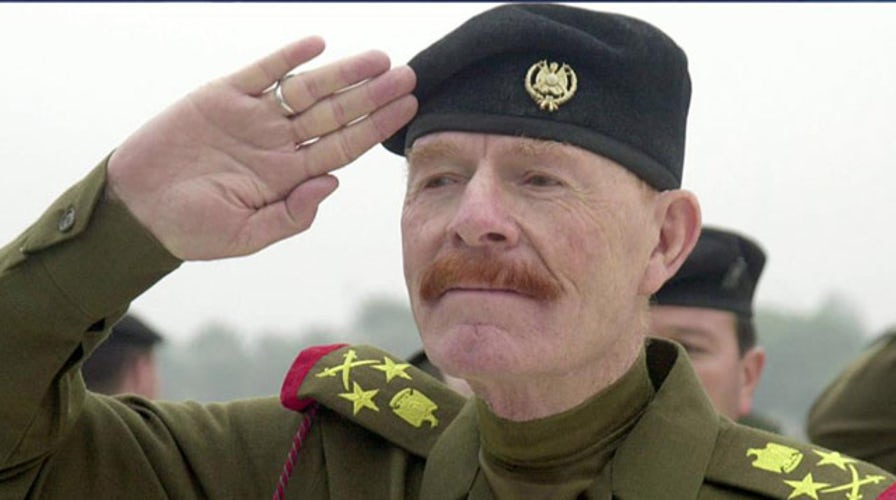Iraqi governor announces death of key Saddam Hussein aide
Circumstances of death still unknown
One of Saddam Hussein’s former top aides and his nine body guards were killed in a shootout with Iraqi military troops and Shiite militiamen near Hussein’s hometown of Tikrit Friday, Iraqi officials said.
Izzat Ibrahim al-Douri was known as the "king of clubs" in the deck of playing cards issued to help U.S. troops identify key members of Saddam's regime. He later allied himself with Islamic State militants and is believed to be the mastermind of the insurgency against the current Shiite-led government.
Salahuddin province Gov. Raed al-Jabouri says soldiers and allied Shiite militiamen killed al-Douri early Friday in an operation east of the city of Tikrit. A graphic photo issued by the government purports to be of al-Douri's corpse.
Al-Douri was killed by Iraqi troops and Shiite militiamen in an operation in the Talal Hamreen mountains near Tikrit, which was retaken from the Islamic State group earlier this month. Troops opened fire at a convoy carrying al-Douri and nine bodyguards, killing all of them, Gen. Haider al-Basri, a senior Iraqi commander, told state TV.
Al-Jabouri told al-Arabiya television that Ezzat al-Douri died in the fighting, Reuters reported. Al- Arabiya—a Saudi-owned TV network— showed images of a dead man Friday, who looked similar to al-Douri
When Saddam's Baathist regime collapsed as U.S. troops occupied Baghdad, al-Douri disappeared. He was No. 6 on the most-wanted list of 55 Iraqis after the invasion. When Saddam was killed months later and more regime figures were caught, al-Douri became the most prominent fugitive -- and U.S. authorities soon linked him to the Sunni insurgencies that erupted against the American occupation and the Shiite-led government that replaced Saddam.
DNA tests are underway to confirm the identity of the body. It was not the first time Iraqi officials have claimed to have killed or captured al-Douri. The government issues several photos showing a body purported to be al-Douri. The body had a bright red beard, perhaps dyed, and a ginger-colored moustache. Al-Douri was a fair-skinned redhead with a ginger moustache, making him distinctive among Saddam's inner circle.
Col. Pat Ryder, spokesman for U.S. Central Command, said the U.S. has no information to corroborate the reported death of al-Douri.
In 2013, the Iraqi government said it arrested al-Douri, circulating a photo of a bearded man who resembled the former Baathist. It later said it was a case of mistaken identity.
Early in the war, U.S. authorities linked al-Douri to Ansar al-Islam, a militant group with ties to al Qaeda, and he was accused of being a major financier of the insurgency. Sunni former officers from Saddam's military and police were believed to have played large roles in the insurgency, whether with al Qaeda or other factions.
Al-Douri emerged as a leader of the shadowy Army of the Men of the Naqshabandi Order. The group depicts itself as a nationalist force defending Iraq's Sunni minority from Shiite rule and as an alternative to the extremist version of Islam championed by al Qaeda . But last year, when the Islamic State group -- the successor to al Qaeda's branch in Iraq -- launched a blitz across much of western and northern Iraq, al-Douri, the Naqshabandi Army and other former Saddam-era officers reportedly entered a shaky alliance with it.
Al-Douri was officially the No. 2 man in Iraq's ruling hierarchy. He served as vice chairman of Saddam's Revolutionary Command Council, was one of Saddam's few longtime confidants and his daughter was married briefly to Saddam's son, Odai, who was killed with his brother, Qusai, by U.S. troops in Mosul.
The Associated Press contributed to this report.

